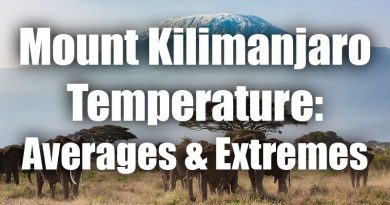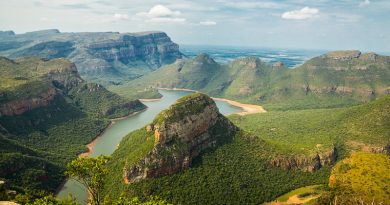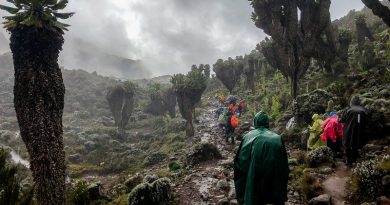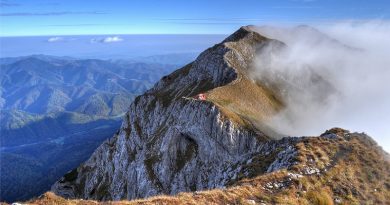There’s no debate: Mount Kilimanjaro is one of the world’s premier climbing destinations. Every year, around 30,000 unique climbers and 80,000 guides make the trek up to the mountain’s peak. The mountain stands an impressive 5,895 meters (19,341 feet) above ground, making it the tallest mountain in Africa and also the tallest free-standing mountain anywhere in the world.
And while the legendary mountain continues to be one of the world’s most popular climbing spots, it’s important that climbers recognize the dangers climbing the mountain poses.
Multiple deaths are reported on the mountain every year, as well as several severe cases of sickness and injury. In this guide, we’ll go over everything you need to know about deaths on the mountain, including the likelihood of death and how to stay safe as you climb.
So saying, let’s jump in and take a look!
How Many People Die on Mount Kilimanjaro Every Year?
There’s no sense in beating around the bush—it’s time to answer the question you’d probably most like to know. Namely, how many people die on Mount Kilimanjaro every year? Recent studies suggest that the number is actually quite low: out of the 110,000 or so people who traverse the mountain on an annual basis, only between three to ten people die every year.
Yes, you read that correctly. This means that the likelihood of you dying on Mount Kilimanjaro are exceedingly low. On the flip side, it also means that it’s possible that you can die on the mountain. In upcoming sections, we’ll dissect the amount of danger climbing puts you in and examine what it is that causes deaths on the mountain.
Is Mount Kilimanjaro Dangerous?

So what do these numbers really mean? By the books, it means that you have at worst a 1 in 3,333 chance in dying if you climb the mountain. Those are pretty safe odds, especially when considering that your chance of getting struck by lightning at some point in your life is 1 in 3,000. Other dreaded fatalities are even more likely to occur. Research suggests you have a 1 in 174 chance of dying of a heart attack and a 1 in 355 chance of dying from a gunshot.
But you don’t need to compare hiking Mount Kilimanjaro to these unrelated events to get a sense of how safe it actually is. Let’s look a little closer to home: climbing Mount Everest gives you an incredible 1 in 10 chance of dying. This means that hiking Kilimanjaro is over three hundred times safer than hiking Everest. Other notable mountains such as K2 boast of an even more intimidating death rate (a whopping 23% or almost 1 in 4 chance of death). This means that, in the pantheon of great mountains, Mount Kilimanjaro is actually exceedingly safe.
While that may be the case, it’s crucial to remember the following:
Always a Risk
While the proportion of accidents may be low, it is not zero. This means that there’s always a risk when climbing Mount Kilimanjaro. It’s your duty as a responsible climber to prepare for these risks and know what you’re getting into before you embark on your climb. Keep reading to find out what causes the majority of deaths on the mountain and what you can do to help prevent any accident while you’re making your climb.
What Causes Deaths on Mount Kilimanjaro?
So what is it that causes the average of ten deaths every year on the mountain? As you’ll see, it’s not because of any one thing. Rather, accidents can be caused by a number of factors, including:
The Altitude
By far the biggest cause of death on Mount Kilimanjaro is Acute Mountain Sickness (AMS). Also known as altitude sickness, AMS derives from a combination of decreased oxygen and overexertion as individuals struggle to adapt to higher altitudes. When it comes to altitude, few places are worse than Kilimanjaro, which dominates the continent and truly towers in the sky. Unprepared climbers especially are at risk for contracting AMS, though this doesn’t mean that established climbers won’t also feel its bite.
What happens with AMS? If you contract this during your Kilimanjaro climb, get ready for a heavy dosage of vomiting, headaches, dizziness, and fatigue. These conditions can cause you to be unsteady and increase the risk of accidents as you navigate up the mountain.
Other illnesses such as High Altitude Pulmonary Edema (HAPE), which causes fluid build up around the lungs at high altitudes, and High Altitude Cerebral Edema (HACE), which causes brain tissues to leak and swell, are also potential hazards. The best way to prevent these conditions is to take your hike up the mountain slowly so that your body has an easier time adjusting to the changes in altitude and oxygen levels.
Inexperienced Climbers
While you don’t need any special equipment to climb the mountain, you do want to make sure that you pack the appropriate climbing gear. This means packing the right amount of thick clothing, sleeping bags, and other necessities so that you don’t fall victim to the cold. Climbers on the mountain have been known to suffer from hypothermia, which ranks among the top causes of Kilimanjaro deaths. Knowing this, you want to be sure you bring an appropriate checklist of items that will keep you warm and safe.
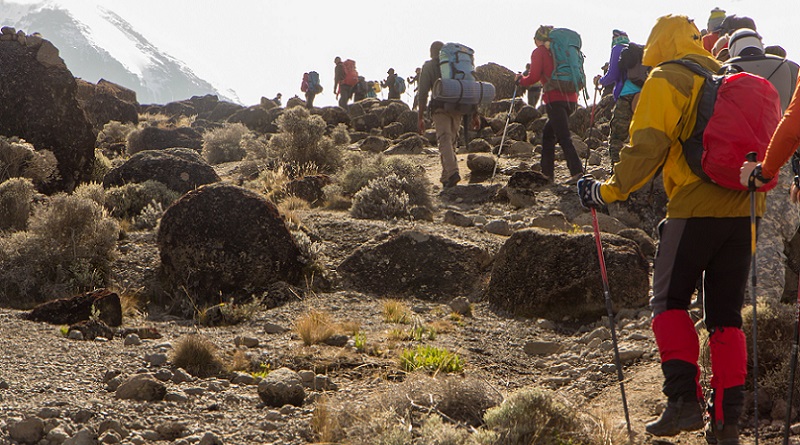
You also want to be sure to choose the best route. Though Mount Kilimanjaro features seven distinct routes for climbers, not all are suited for every traveler. The Western Breach route, in particular, has a reputation of being tougher for new climbers—not least because of its intermittent rock falls. These falls have been known to kill travelers in the past, meaning you should probably avoid this route if you’re looking for a safe climb. Other routes such as the Machame (or Whiskey) route contain steeper hills and are generally tough to navigate; as such, these routes are best tackled by climbers with serious experience. Remember, overexertion and AMS go hand-in-hand, so it’s never a good idea to climb above your level of expertise or fitness.
The Weather
While the weather on Mount Kilimanjaro is typically pleasant during the dry season (from June to October), at other times it can be downright nasty. For this reason, climbing during the wet season (from March to June) is generally not advised, as limited visibility and slippery slopes make climbing more dangerous. With rockfalls, increased humidity, and other potentially dangerous factors at play during this season, climbers face a more “uphill climb” by booking their trips for this time.
How to Be Safe When Climbing Mount Kilimanjaro
Knowing that these risk factors exist isn’t enough. Without taking steps to make your trip as safe as possible, you could be in for a rude awakening. Remember, no matter how fit you are, the extreme altitude of the mountain can lead to sickness—and that’s without considering the difficulty of the individual routes. Recognizing this, this section will discuss the various ways in which you can enhance your safety while climbing Kilimanjaro.
To make sure that your Mount Kilimanjaro vacation is as safe as possible, consider the following safety tips:
Be Aware of Your Health
Because most deaths on Mount Kilimanjaro have been linked to acute altitude sickness, be sure to check with your doctor before climbing. By understanding the state of your health before the climb, you can have a better idea of whether climbing Mount Kilimanjaro is right for you.
Remember, because the altitude gets incredibly high, you may not want to make this your first climb. Starting off with smaller climbs to get used to different altitudes may help you better understand your limits. You’ll also generally want to be sure to sleep at lower altitudes than what you climbed to during the day, as this will help you acclimate to the altitude. Longer trips (around seven to eight days) are also better than shorter trips (five to six days) when it comes to altitude sickness, as your body has more time to adjust to the changes in oxygen.
What’s more, by staying hydrated (be sure to bring plenty of water!) and eating high calorie foods, you can keep your body energized and ease your acclimation to new altitudes. This is a key part to staying safe during your climb, so be sure to prepare for it beforehand.
But altitude sickness isn’t the only type of health problem you should be on the lookout for. Because of the incredible carefulness you should take when climbing, it’s imperative that you make sure that you’re in tip-top shape to climb.
What does this mean for you? Put bluntly, don’t try to overexert yourself. Feel a cold coming on? Is your knee not quite up to par after falling last week?
If so, don’t try to climb. Though these may seem as if they’re minor conditions, in reality, they can be very distracting while climbing.
And when you’re climbing one of the world’s tallest mountains, distractions can equal danger.
Wear the Right Gear
You don’t want to find yourself freezing because you didn’t bring the right sleeping gear.
Trips to the top of the mountain average between five to eight days (depending on route) there and back, meaning you’ll be stuck out in the wilderness for quite some time. During this time, you’ll face the potential hazards of cold rain, snow, and ice, all of which can be dangerous to ill-prepared climbers.
For this reason, be sure to wear the right climbing boots (like this one, although you may be surprised to know that some brave souls actually attempt to make it to the summit in sneakers), a sun hat, and a mix of warm and cool-weather clothes. This will help you to brave the elements and stay fit on the way up the mountain.
Don’t Go Alone
Even the most experienced climbers find it easier to climb with a partner. With a mountain as intense as Kilimanjaro, especially, you’ll want to make sure that you have a buddy to go along for the climb.
Putting it bluntly, getting to the top of this storied mountain isn’t easy, even during the famed dry season. That’s because you’ll need to cross through four different climate zones and brave extreme altitudes to reach the pinnacle. Choosing more difficult routes (such as Machame or Umbwe) only makes the need for a partner more paramount.
Long story short, you gain nothing by making the climb by yourself. For best results, you’ll want to go with someone else who has climbing experience, especially if you don’t have many climbs under your own belt.
Stop If You Need To
You’ll have to trek about 6,000 meters above ground if you wish to reach the top of Mount Kilimanjaro. Don’t think you’ll have to do it all in one go. Altitude sickness is a real thing, and it will hit if you begin to overexert yourself. The sickness itself derives from higher altitudes and your body working harder than usual to keep up with the increased pressure. Add into the mix a decrease in the amount of oxygen, and it’s no wonder so many climbers—professional and otherwise—find it tough to reach the top.
Knowing this, don’t be afraid to stop and rest. Getting to the mountain peak isn’t a race. By going slowly and stopping when you need to, you can prevent sickness and the dangers that come with it.
The Bottom Line
By reaching the summit of Mount Kilimanjaro, you can solidify your status as an elite adventurer and cross off a major accomplishment from your bucket list. Compared to other mountains of its size, Kilimanjaro is one of the safest anywhere in the world, with only ten deaths per year on average.
Still, you’ll want to be sure to take precautions before setting out, as climbing the mountain does present some unique perils. Acute mountain sickness, hypothermia, and rock falls have all been known to take out Mount Kilimanjaro climbers.
So what does this mean for you?
Simply put, it means that, while you don’t have much to worry about, you’ll want to make sure to take all precautions when you trek Mount Kilimanjaro. By keeping in mind the information in this guide, you’ll be better prepared to face the challenges of climbing this world-famous mountain. Whether you’re just starting out or have years of climbing under your belt, you can use this safety information to make ascending Mount Kilimanjaro your best adventure yet!

